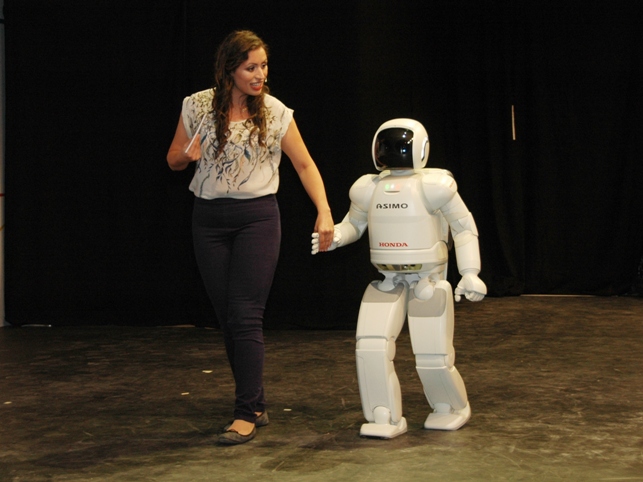They have been slower in coming than science fiction books had predicted, but they are starting to leave the factories and the most innovative laboratories with the aim of revolutionizing mankind´s daily life. From defense to interpersonal relationships, from the services sector to the space exploration industry, robotics has already provided some examples of machines involved in people´s work and leisure activities: they are not the future, they are the present.

Photo creditt: Honda
1- Asimo
Asimo -created by Japanese company Honda- was launched in 2000. Its height of 120cm and 52kg weight have made it the world´s most recognizable humanoid robot, and it has been at the forefront since its appearance, working as a personal assistant. Apart from walking and moving its hands with precision, it has voice recognition, allowing it to follow verbal commands. It also has visual recognition and therefore can identify people and objects, which allow it to perform its tasks without any problems. It is able to walk hand in hand with a person.

2 – BionicKangaroo
Why would we want a robotic kangaroo? Its true and immediate usefulness is null. But the knowledge applied in its development will eventually be more important than what it seems today. Created by German company Festo, BionicKangaroo has been able to unravel the energy efficiency secret with which kangaroos naturally move, developing great power with little energy expenditure, absorbing the energy used in every jump.

3 – Atlas
Atlas is the Titan of robots, created by Boston Dynamics and DARPA, the U.S. military research agency. It is as agile and “human” as a machine can be today. Designed to interact easily with the environment -carrying out rescue and civil protection tasks-, it was launched in the summer of 2013.

4 – Jibo
This is a different kind of personal assistant. Jibo is the closest thing there is to the logical evolution of the assistant offered by some smartphones. It is able to perform tasks after receiving voice commands and its movements and technology allow it to inform verbally of incoming emails and their content, act as a link for videoconferencing, take pictures and videos simultaneously and recognize specific people and follow them with its camera, among many other capabilities. It is now in its presentation phase and should reach consumers´ households by the end of 2015.

5 – CREX and SHERPA
Designed for the exploration of other worlds -by German company DFKI-, CREX and SHERPAare the future of space research. CREX is a six-legged rover able to move freely through difficult terrain. SHERPA is a true giant transporter capable of transporting CREX as well as carrying out all kinds of ground exploration work due to the four wheels placed at the end of each of its four jointed legs.

6 – Baxter
Baxter is a robot designed by American company Rethink Robotics for the purpose of becoming an employee in small businesses and industries. Packing and even cutting vegetables is terribly easy for Baxter, thanks to its ability to learn and assimilate all kinds of new knowledge. It has even been taught to understand the trajectory of objects in order to catch them in flight, which could eventually be helpful for the prevention of accidents.

7 – Ava 500
Yet another step forward in the world of telework and remote interpersonal communication, Ava 500 allows a person to be present in an office even when located thousands of miles away. Telepresence is reinforced by the fact that this robot can be controlled to move and look in every direction, allowing the absent person to gain the dynamism videoconferences cannot provide.
via bbvaopenmind.com



